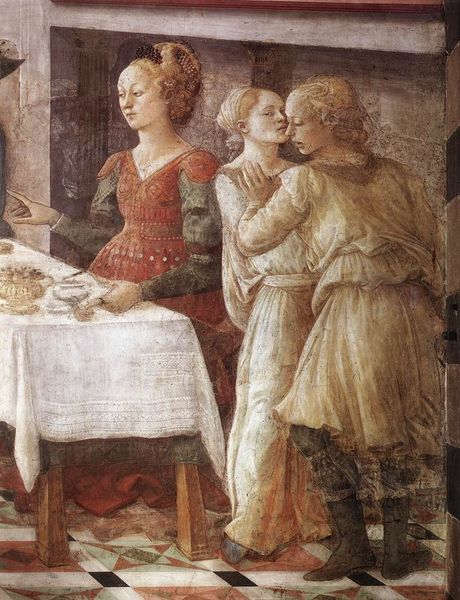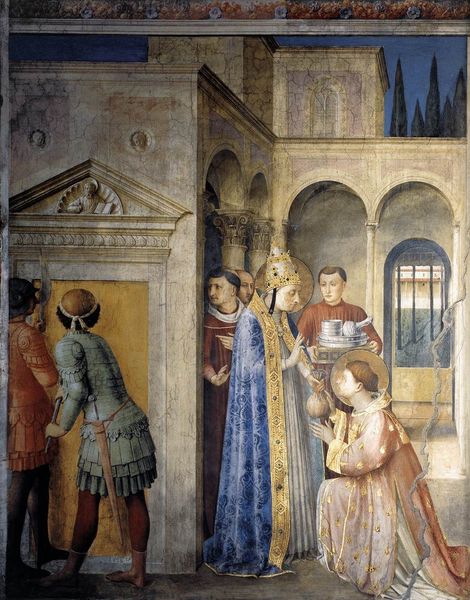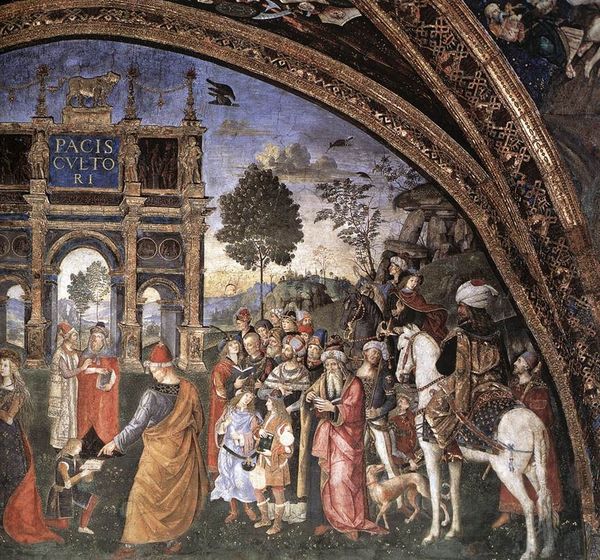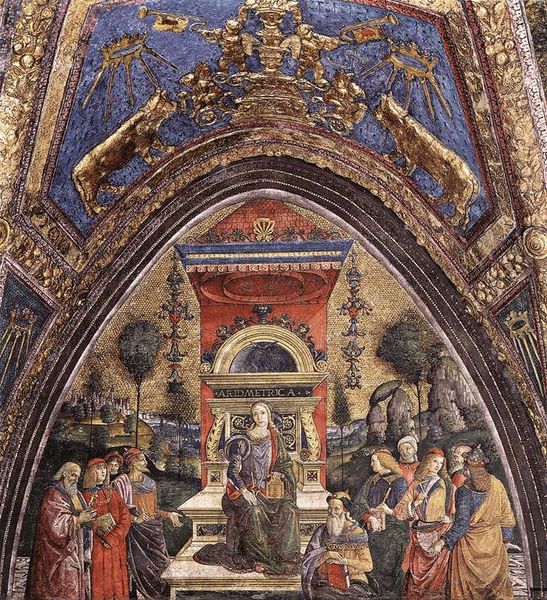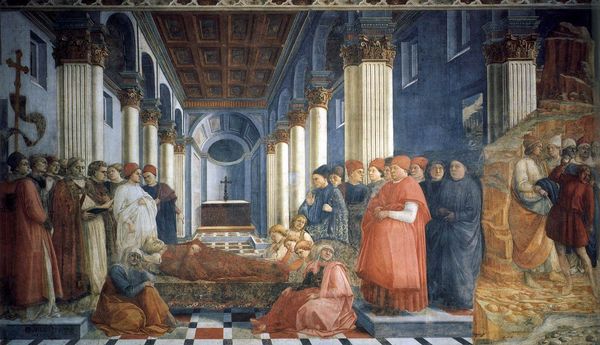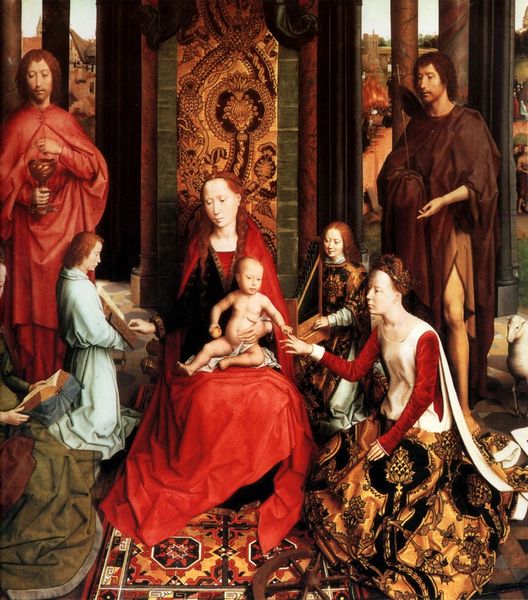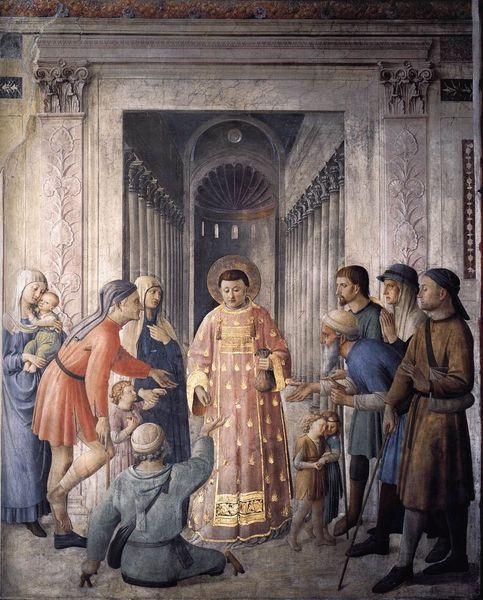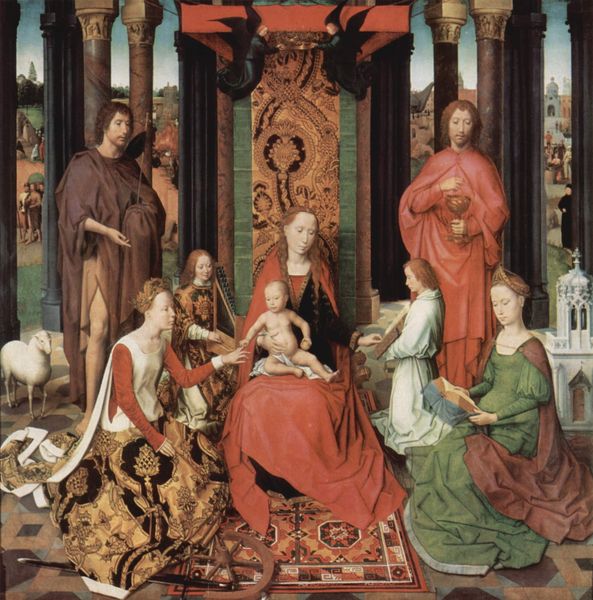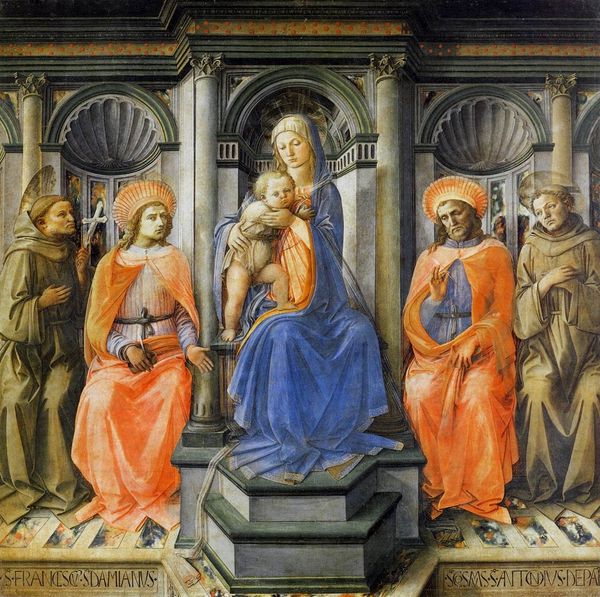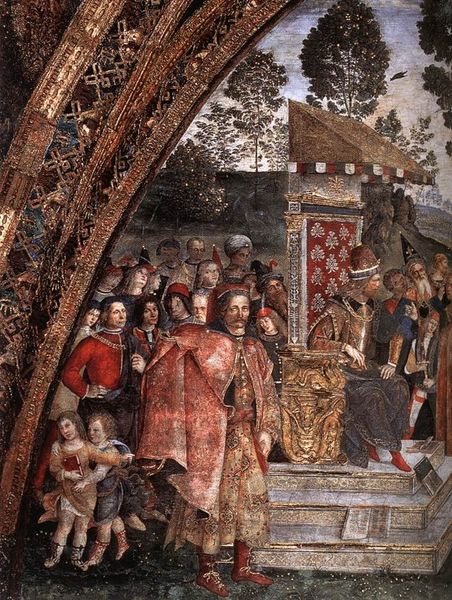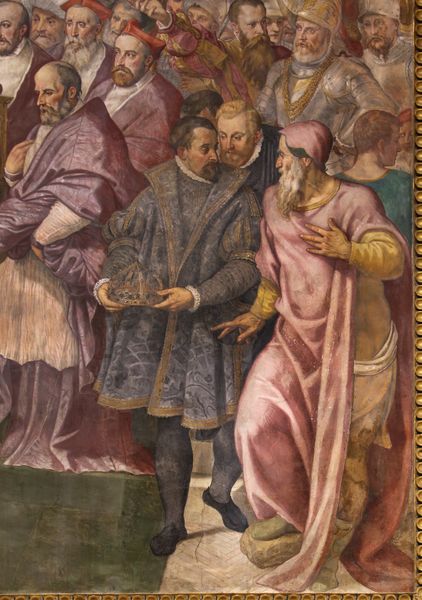
painting, oil-paint
#
portrait
#
high-renaissance
#
painting
#
oil-paint
#
oil painting
#
group-portraits
#
history-painting
#
academic-art
#
italian-renaissance
Copyright: Public domain
Curator: Let’s discuss Andrea Mantegna's "The Court of the Gonzaga," or rather, a detail from it, created around 1474 using oil paint. What strikes you most when you look at this piece? Editor: Immediately, the almost theatrical staging grabs me. They're not simply posing; they’re presenting themselves, self-aware within this pictorial stage, don't you think? There’s such an elaborate display of wealth. Curator: Absolutely. And consider the materials at play here: oil paint allowed Mantegna to achieve that incredible detail in the fabrics and jewels. Notice how their status isn’t just worn but constructed, reflecting the rising merchant class influencing artistic production and what was being commissioned at the time? Editor: Oh, definitively. It’s about manufacturing an image. That woman seated centrally—so imposing. But, in some ways, so very still, like a mannequin draped in opulent fabrics. I find it eerie. There is something not exactly vibrant here. Curator: True, this stillness, that composure speaks volumes. High Renaissance painting often served as a visual ledger of power, mapping dynastic lines and commercial clout. The detail shown would’ve taken so long to complete that these fabrics or jewelry styles would likely already be out of date or replaced. The actual process speaks volumes, does it not? Editor: Yes, how it makes me wonder, though. What did it feel like to be among all this controlled display? Were these figures merely ornaments of wealth themselves, or was their power also an illusion crafted just like everything else in the room? Curator: Those are interesting questions. And for the family viewing this fresco in their space, this image created what they desired, that perception of the control, right? Editor: Indeed. Ultimately it shows how artists captured an image, of the power the people in charge wanted others to think they held, and were then complicit in conveying a similar image. Curator: A final thought, reflecting on our dialogue. I see how the conditions of this artwork’s creation profoundly shape how it looks and what it represents; from technique, commission and the message displayed in a place for power. Editor: It also tells of the inherent fragility in posing and maintaining such powerful appearances, through not only the image but the work to achieve that illusion too. Food for thought indeed.
Comments
No comments
Be the first to comment and join the conversation on the ultimate creative platform.

